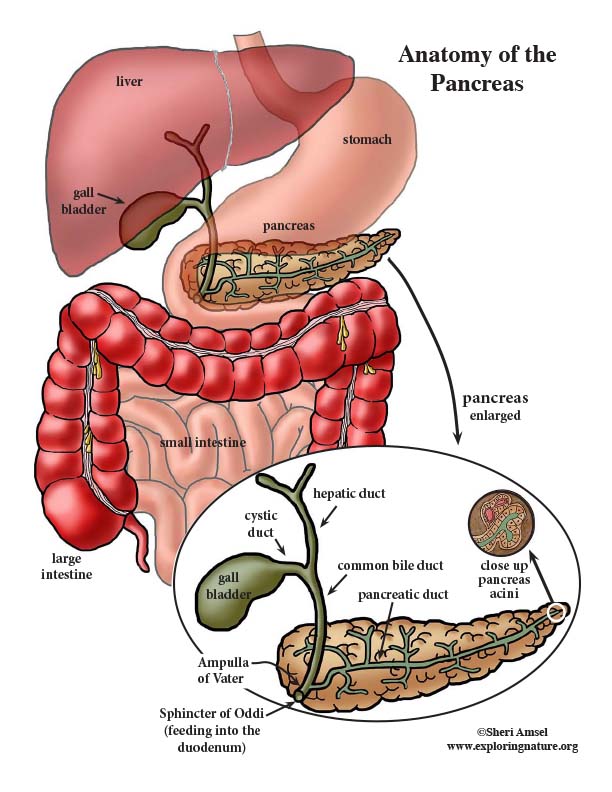

Pancreas Facts:
1. The pancreas is the primary enzyme producing organ of the digestive system.
2. The head of the pancreas lies near the duodenum, the body lies retroperitoneal, the tail lies behind the greater curvature of the stomach.
3. The secretory units of the pancreas are called acini.
4.The pancreatic duct fuses with the common bile duct, which brings bile from the liver and gall bladder to the duodenum. This is called the greater papilla (also the Ampulla of Vater and the hepatopancreatic ampulla). They dump into the duodenum thought the Sphincter of Oddi.
5. Pancreas also has an endocrine function producing hormones:
When you research information you must cite the reference. Citing for websites is different from citing from books, magazines and periodicals. The style of citing shown here is from the MLA Style Citations (Modern Language Association).
When citing a WEBSITE the general format is as follows.
Author Last Name, First Name(s). "Title: Subtitle of Part of Web Page, if appropriate." Title: Subtitle: Section of Page if appropriate. Sponsoring/Publishing Agency, If Given. Additional significant descriptive information. Date of Electronic Publication or other Date, such as Last Updated. Day Month Year of access < URL >.
Amsel, Sheri. "Pancreas Anatomy (Advanced)" Exploring Nature Educational Resource ©2005-2024. December 14, 2024
< http://www.exploringnature.org/db/view/Pancreas-Anatomy-Advanced >
